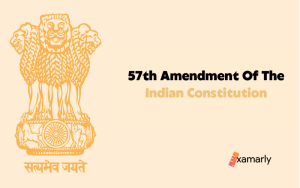Alauddin Masud Shah, also known as Ala-ud-Din, was the seventh sultan of the Mamluk dynasty. He ruled from 1242 to 1246 and struck gold and silver coins in his name. His reign was also notable for striking a billion coins in Budayun and Lakhnauti.
In the history of the Delhi Sultanate, there are various renowned and strong rulers. For example- Illtutmish, Muiz ud-din Bahram, Alauddin Khilji, Muhammad bin Tughlaq, Ghiyasuddin Tughlaq, Firuz Shah Tughlaq, Aram Shah, Qutbuddin Mubarak Shah, Tughlaq Khan, Sikander Lodi, Ibrahim Lodi, Bahlol Lodi, and many more.
Besides them, Alauddin Masud Shah was not a very influential majesty.
This article is dedicated to Alauddin Masud Shah. This article will be beneficial for UPSC exam preparation.
Who Was Alauddin Masud Shah?
Alauddin Masud Shah, the seventh ruler of the Mamluk dynasty, was the son of Ruknuddin Feroz Shah. While Ruknuddin was born to Sultan Illtutmish and Shah Turkan.
Masud Shah was the nephew of Sultan Raziyyat. He succeeded the throne after the murder of his uncle Muiz ud-din Bahram, by his army, in 1242.
Alauddin was not a man of great power in the government, but rather just a mere puppet of the chiefs.
The powers of the state were wielded by the chiefs. Soon he was just known for his interests in wine and entertainment and proved to be an incompetent ruler.
Ala ud-Din Masud ruled for four consecutive years. The gold and silver coins issued by him during his reign were struck in Budayun, and their value estimates to be more than $1 million today.
Ascension To The Throne
Alauddin Masud Shah, the son of Rukn ud-din Firuz Shah, was the successor to the throne after Bahram. The previous Sultan, Bahram Shah, who was his uncle, was assassinated by Turkish nobles.
Turkish army couldn’t settle the argument of the next between one of them and a member of the Iltutmish family.
But one of the “forty”- Izzuddin Kishlu Khan, became the Sultan following Bahram Shah’s demise. However, the Turkish nobles were completely against the enthronement of Kishlu Khan. So, later Alauddin Masud became the one to hold the crown of the Sultan with a lack of executive authority.
Similar Posts:
- Delhi Sultanate Dynasty: Medieval Indian History
- Tughlaq Dynasty: Medieval Indian History
- Lodi Dynasty: Medieval Indian History UPSC Notes
Reign
- Alauddin Masud Shah was not a member of the original group of forty Turkish slaves. He was a puppet Sultan who inherited the power of the nobility.
- The Governor of Avadh named Tamar Khan lost to Masud Shah. Alauddin captured Avadh and won over Bihar.
- He was not even a member of the Naib-i-Mamlakat. Muhazabuddin reported to the post of Wazir, and the Turkish nobles continued working on the other important posts.
- He initiated the post of Malik-e-Mimlikat, which he later assigned to Malik Qutbuddin Hasan. In addition, he chose Imamuddin Hasan for the position of Chief Judge.
- Alauddin lacked the qualities of a true ruler and hence was incompetent in all his endeavors. He had a great fondness for entertainment. He played for the Turkish nobles while various rulers declared themselves independent.
- The strongest man of Alauddin’s regime was Muhazbuddin. He tried to attack the Turkic nobles’ central army himself but was executed by them before he could kill them.
- Following the demise of Muhazbuddin, Najamuddin Abu Bakr received the position of minister. While Balban was the chief officer(Amir I Hazib) by Alauddin.
- Ghiyasuddin Balban, a Turkish noble, conspired against Masud along with Nasiruddin Mahmud and his mother. He viciously wanted to dethrone Alauddin.
Coins
Ala al-Din Masud Shah is famed for his ancient and Arabic coinage collection. It included gold, silver, and billon coins.
From Delhi and Lakhnauti, gold and silver antique coins were issued as Tankas. It initially quoted the Caliph Al-Mustansir and further, Clips Al-Mustasim. From Delhi and Budayun, a billion basic coins were minted in the denomination of Jital.
Death
Ala ud-din Masud Shah lost the trust of all as he was incapable of capturing Bengal and Sindh. While Ghiyasuddin Balban/Ulugh Khan was a powerful man with a wicked mind.
His conspiracy along with Nasiruddin Mahmud and his mother was successfully executed. A majority of the nobles wanted to dethrone Masud.
Hence, on 10th June 1246, Alauddin was brought down from the throne by Nasiruddin’s bid for power. Nasiruddin Mahmud Shah became the new Sultan. Alauddin was locked in jail and he died there.
To learn more about Nasiruddin Mahmud Shah click on the linked article.
Closing Thoughts
Alauddin Masud Shah’s reign was marked by political instability and incompetence. However, his short-lived rule highlights the tumultuous nature of the Mamluk dynasty, and how even the most powerful rulers could be brought down by internal struggles.
Alauddin’s story serves as a cautionary tale, reminding us of the importance of strong leadership and political stability in times of crisis.
Frequently Asked Questions
Who was Alauddin Shah?
Alauddin Masud Shah was the seventh ruler of the Mamluk dynasty, who succeeded the throne after the murder of his uncle Muiz ud-din Bahram by his army in 1242.
What was the legacy of Alauddin Shah?
The legacy of Alauddin Masud Shah is the gold and silver coins he issued during his reign, which are estimated to be worth over $1 million today.
What was Alauddin Masud Shah’s reign like?
Alauddin Shah’s reign was marked by political instability and incompetence. He was not a powerful figure in the government and was seen as a mere puppet of the chiefs.
Who were Alauddin Masud Shah’s parents?
Alauddin Masud Shah was the son of Ruknuddin Feroz Shah, who was born to Sultan Illtutmish and Shah Turkan.
What is the reason behind Alauddin Masud Shah’s rule?
Alauddin Masud Shah became the ruler after his uncle Muiz ud-din Bahram was murdered by his army in 1242.
What was the Mamluk dynasty?
The Mamluk dynasty was a slave dynasty that ruled over the Delhi Sultanate from 1206 to 1290.
How long did Alauddin Masud Shah rule?
Alauddin Masud Shah ruled for four consecutive years, from 1242 to 1246.






